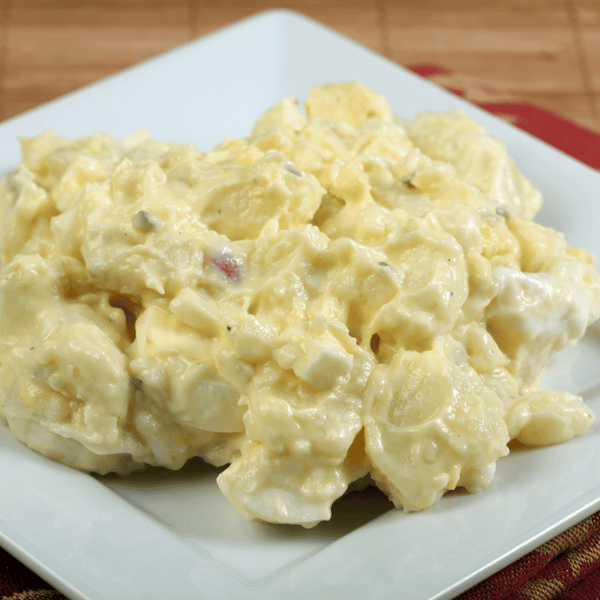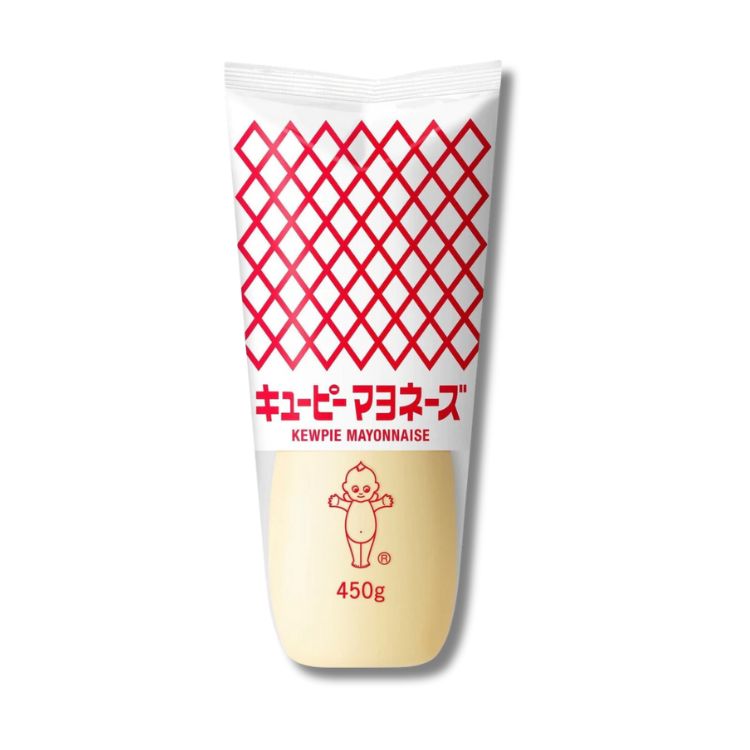Kewpie & Japanese Mayo Recipes: A Complete Guide
Japanese mayonnaise has been delighting taste buds in Japan for nearly a century. With minimal effort, you too could make your own mayo and transform some of your favourite dishes.
If you think your sandwiches and salads can't get any better, prepare to be amazed by adding Japanese mayonnaise. We bet you'll find it richer, smoother and tastier than anything you've tried before.
In this article, we're going to explain the story of Japanese mayo and what makes it so special. We'll also share how we make our own Japanese mayo recipes at home! So, let's get started and help you discover your new favourite Japanese ingredient!
→ Shop now: Our range of Kewpie Japanese Mayo
What Is Japanese Mayonnaise? How Is It Different From Western Mayonnaise?
Japanese mayonnaise distinguishes itself from other variations with its unique ingredients, flavour, and texture.
Unlike traditional Western mayonnaise, which typically incorporates whole eggs, Japanese mayonnaise often uses solely egg yolks. We find that this contributes to a richer, savoury flavour profile and a creamier, velvety texture.
The choice of vinegar is another differentiating factor. Instead of white distilled vinegar, Japanese mayonnaise uses a blend of vinegars such as apple cider, rice and red wine vinegar. This gives it a subtle sweetness and a smoother tang, resulting in a more exciting taste experience.
One of the other hallmarks of Japanese mayonnaise is the option to use umami-rich components. This includes ingredients such as monosodium glutamate (MSG). Alternatively, add a dash of mustard for a more complex taste.
Go ahead and try Japanese mayonnaise for yourself! With its creamy, velvety texture and richer taste, it won't take long to see why it's so popular not just in our kitchen, but in Japan too.
Japanese mayonnaise offers you so many new and exciting options. Enjoy it with sushi rolls, sandwiches, salads or as a dip. It's also a popular condiment for dishes such as okonomiyaki and takoyaki.

What Is Kewpie?
The most famous and original Japanese mayonnaise brand is Kewpie, which is sometimes referred to as QP.
In 1925, a visionary named Toichiro Nakashima embarked on a mission to create a mayonnaise that would enhance everyday Japanese food. Inspired by his travels to the United States, where he encountered Western mayonnaise, Nakashima founded the Kewpie Corporation.
The name "Kewpie" was a nod to the Kewpie doll, a popular comic strip doll from the early 20th century which was considered a symbol of joy and innocence. Little did Nakashima know that this doll would eventually become synonymous with his mayo brand.

Kewpie Mayo's journey began with a commitment to quality. Nakashima insisted on using twice as much egg yolk as other brands, resulting in a richer, more nourishing product. Rumour has it that he also wanted to improve the physique of the Japanese population.
How Is Kewpie Mayonnaise Made?
Kewpie mayonnaise is made from a blend of carefully selected ingredients. This includes pasteurised egg yolks, a proprietary vinegar blend featuring apple cider, rice vinegar and spirit vinegar. Additionally, vegetable oil and salt are integral to this iconic Japanese condiment. In Japan and some other countries, Kewpie mayo also incorporates monosodium glutamate (MSG), adding a savoury depth to its flavour profile.
However, as Kewpie mayonnaise is exported to various countries, adjustments are made to cater to local tastes and preferences. For instance, in China, where mayonnaise is commonly used in fruit salads, Kewpie mayo tends to be sweeter. In Malaysia, consumers have the option of mild or chilli-spiked versions. Notably, American and British variations of Kewpie mayo remove MSG and may include more sugar and mustard for a slightly different flavour profile.
How to Make Japanese Mayonnaise at Home?
Making Japanese mayo at home is easy and rewarding. Here's our very own homemade Japanese mayo recipe that we use in our own kitchen. We believe that by following this you can achieve the perfect taste, just as good as Kewpie mayonnaise.
Step 1: Gather Your Ingredients
For 350g of Japanese Mayonnaise, you will need:
- 2 large egg yolks: Provides richness and a creamy texture.
- 1 tablespoon rice vinegar: Adds a mild sweetness and subtle acidity.
- 1 teaspoon apple cider vinegar: Contributes a fruity tanginess.
- 1 teaspoon mustard: Enhances flavour acts as an emulsifier.
- 1/2 teaspoon salt: Balances overall taste.
- 1.5 cups neutral-flavoured oil (such as canola or grapeseed oil): Forms the base without overpowering other flavours.
Step 2: Prepare Your Equipment
Ensure all utensils and ingredients are at room temperature to aid emulsification, allowing liquids to mix more effectively. We also recommend a blender or food processor for mixing.
Step 3: Blend the Egg Yolks and Vinegar
Combine the egg yolks, rice vinegar, apple cider vinegar, Dijon mustard, salt, and any optional ingredients in the blender or food processor. Blend on low speed until well combined.
Step 4: Gradually Add the Oil
With the blender running at low speed, drizzle the oil slowly in a steady stream. It's crucial to add the oil gradually to achieve proper emulsification. As you add the oil, the mixture thickens and becomes creamy.
Step 5: Continue Blending Until Smooth
Continue blending until all the oil has been incorporated and the mayonnaise is smooth and creamy. Be patient and avoid rushing this process, as it's essential for achieving the right texture.
Step 6: Adjust Seasoning to Taste
Taste the mayonnaise and adjust the seasoning if necessary. Add salt, vinegar, mustard, sugar, or MSG to achieve the desired flavour profile.
Step 7: Store and Enjoy
Transfer the homemade Japanese mayo to a clean jar or container and store it in the refrigerator. It can be kept for about a week.

Tips and Tricks
As passionate food enthusiasts at Morueats, we've enjoyed making our own mayonnaise. Here are some tips and tricks to help you achieve the best results.
- Use fresh, high-quality eggs for the best results.
- Don't rush. Add the oil slowly and steadily while blending to ensure proper emulsification.
- If your mayonnaise separates or fails to thicken, add another egg yolk and blend slowly.
- Experiment with different types of vinegar and oils to customise the flavour of your mayonnaise.
- For a creamier texture, you can substitute some oil with Japanese-style mayonnaise, like Kewpie, as a starter culture.
- Feel free to experiment with additional seasonings like garlic, herbs, or spices to create a unique homemade mayonnaise. Take time to discover your ideal blend of flavours and textures.
Recipe Variations
Experimenting with your homemade Japanese mayonnaise can lead to delightful new flavours. Here are some ideas to customize your mayo:
-
Spicy Mayo: Stir in a teaspoon of Sriracha or chilli paste for a spicy kick, perfect for sushi rolls and dipping sauces.
-
Wasabi Mayo: Add a small amount of wasabi paste to give your mayo a sharp, zesty flavour ideal for seafood dishes or whenever you want an extra kick.
-
Garlic Mayo: Mix in minced garlic or garlic powder for a savoury spread that's great on sandwiches and burgers.
-
Herb Mayo: Incorporate finely chopped fresh herbs like dill, parsley, or chives for an aromatic twist.
The Versatility of Japanese & Asian Mayonnaise
Japanese and Asian mayonnaise can enhance your favourite dishes. In Japanese cuisine, it's a staple in classics such as sushi rolls and okonomiyaki. Mixing Kewpie with Gochujang in Korean cuisine creates a creamy and spicy dipping sauce for fried foods. Chinese cuisine utilises it in fruit salads for a sweet and tangy twist. While in Southeast Asia, it adds creaminess to dishes like Thai spicy salads.
In Western cuisines, Kewpie can enhance sandwiches, salads, burgers, and dips with its unique umami flavour and creamy texture. Its adaptability makes it a beloved ingredient worldwide.
Its potential is limitless. At Morueats, we're excited to help you explore how this simple ingredient can transform your cooking and bring new flavours to your table.
9 Japanese Mayonnaise Recipe Ideas
Let's explore nine of our favourite Japanese Mayo Recipes you can get started on with ease.
#1 Okonomiyaki
Drizzle Kewpie mayo over these savoury Japanese pancakes called okonomiyaki for an extra layer of creaminess. Combining Japanese mayo, okonomiyaki sauce, and bonito flakes is pure magic.

#2 Takoyaki
Those crispy octopus balls? A generous swirl of Kewpie mayo takes them from good to unforgettable.
#3 Sushi Rolls
Forget regular mayo - Kewpie mayo adds a depth of flavour to your sushi rolls. Dip your rolls or drizzle it over the top.

#4 Kimchi Fried Rice
A personal favourite, mix Kewpie mayo into your kimchi fried rice for a creamy kick. The tangy mayo balances the spicy kimchi beautifully.
#5 Bulgogi Burgers
Slather Kewpie mayo on your bulgogi burgers. It complements the sweet and savoury bulgogi marinade perfectly.
#6 Fish Tacos
Swap regular mayo with Kewpie mayo in your fish tacos. The result? A burst of umami that pairs wonderfully with the crispy fish.
#7 Potato Salad
Kewpie mayo adds richness and depth when making Japanese-style potato salad or a classic American version. You can also infuse it with Japanese sesame dressing.

#8 Chocolate Cake
Yes, you read that right! Kewpie mayo in chocolate cake batter creates an incredibly moist and tender crumb.
#9 Devilled Eggs
Mix Kewpie mayo into your devilled egg filling. The rich taste and smooth, velvety texture, make it a classic appetiser.

#10 Lobster Rolls
Whip up a spicy mayo using Kewpie mayo for your lobster rolls. It's a game-changer.
Where Can I Buy Kewpie Mayonnaise?
For a more authentic experience, visit local Asian grocery stores, which may offer a wider range of Kewpie mayo and other Japanese goodies.
At Morueats, we are committed to bringing authentic Japanese flavours right to your doorstep. Explore our selection of Kewpie mayo and discover a world of Japanese delights ready to enhance your cooking.
When selecting the right product, consider options like the original versus light versions. The original version offers more flavour, whereas the light version contains fewer calories. Consider opting for the classic red-capped squeeze bottle, if available, because it's specially designed to exclude oxygen, ensuring the product remains fresh.
How to Store Kewpie and Japanese Mayo?
Store your Kewpie mayo in a cool, dark place, such as the pantry or fridge, for optimal freshness. Once opened, tightly seal the bottle to prevent exposure to air and remember to check expiry dates for optimal freshness.
Final Word
The unique qualities of Japanese mayonnaise, especially Kewpie, have had a significant influence on Japanese and Asian cuisine. From sushi rolls to fruit salads, the possibilities are endless. As you explore Japanese mayonnaise recipes, seize the opportunity to innovate, connect culinary traditions, and discover new flavours that bring people together.
→ Shop now: Our range of Kewpie Japanese Mayo
FAQs
Q: How long does homemade Japanese mayonnaise last?
A: Homemade Japanese mayonnaise can be stored in the refrigerator for about a week when kept in a clean, airtight container.
Q: Can I use whole eggs instead of just egg yolks?
A: Using only egg yolks gives the mayonnaise its rich and creamy texture. However, you can use whole eggs if you prefer a lighter consistency.
Q: What can I substitute for rice vinegar?
A: If you don't have rice vinegar, you can use white wine vinegar or additional apple cider vinegar, though the flavour may differ slightly.












